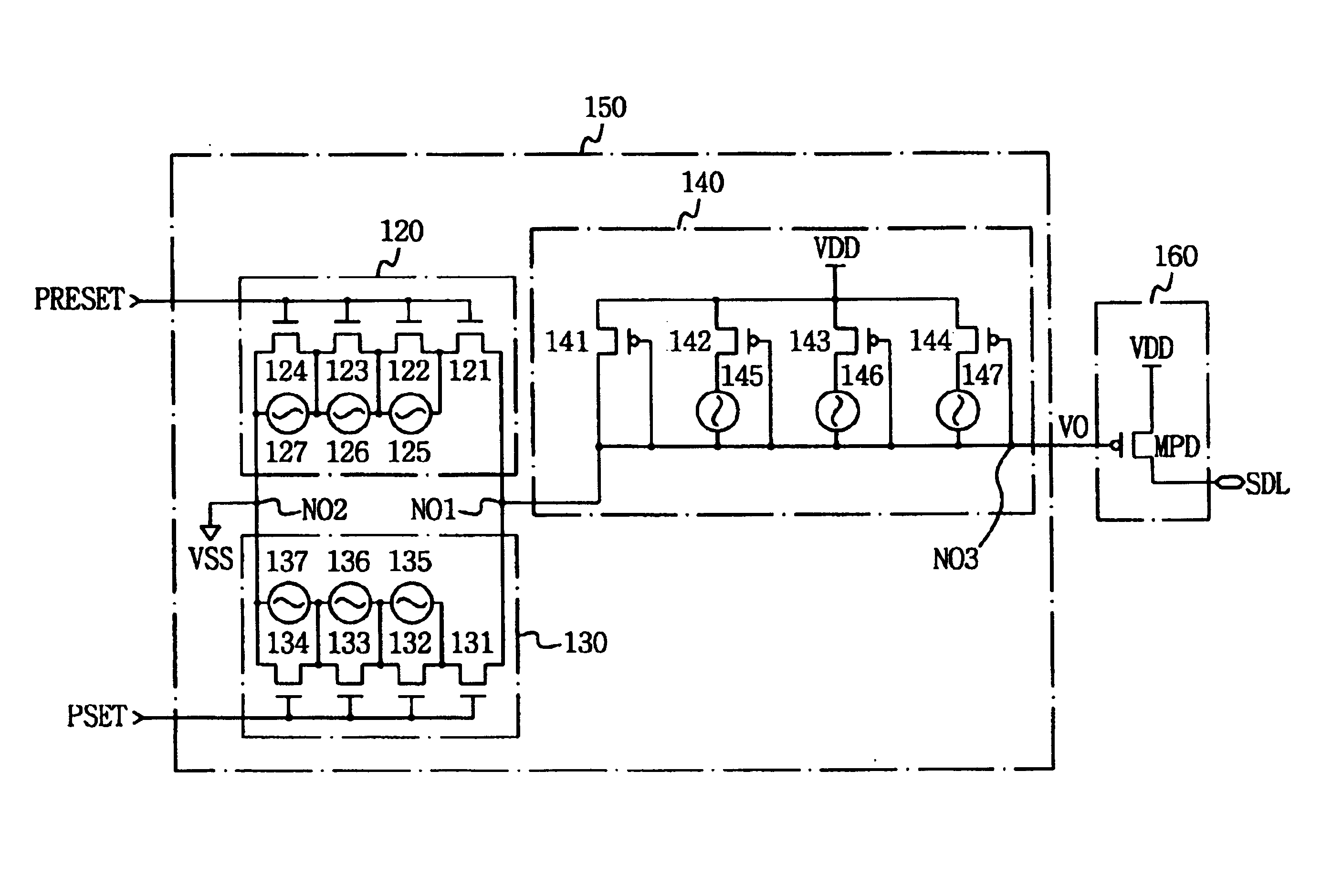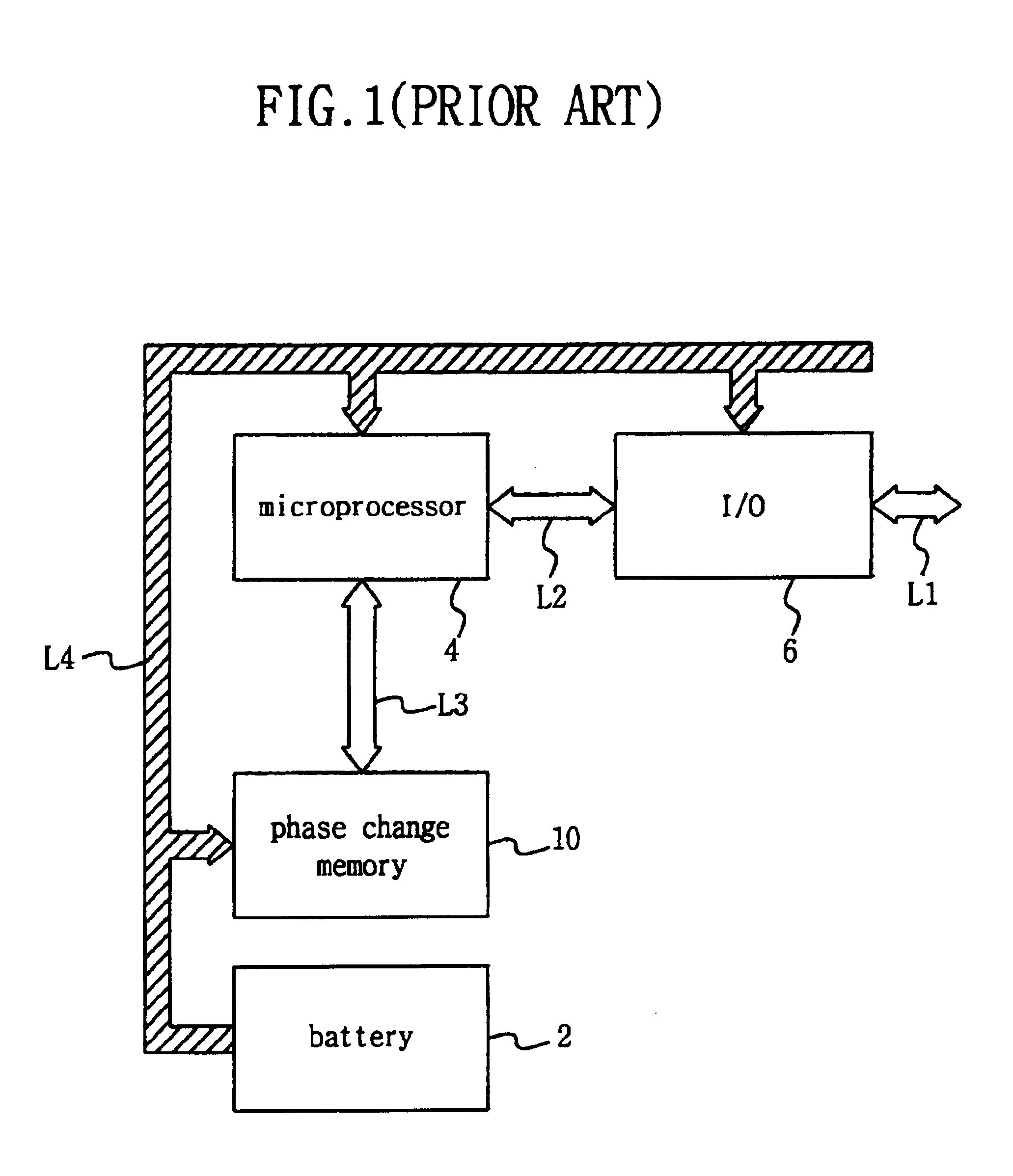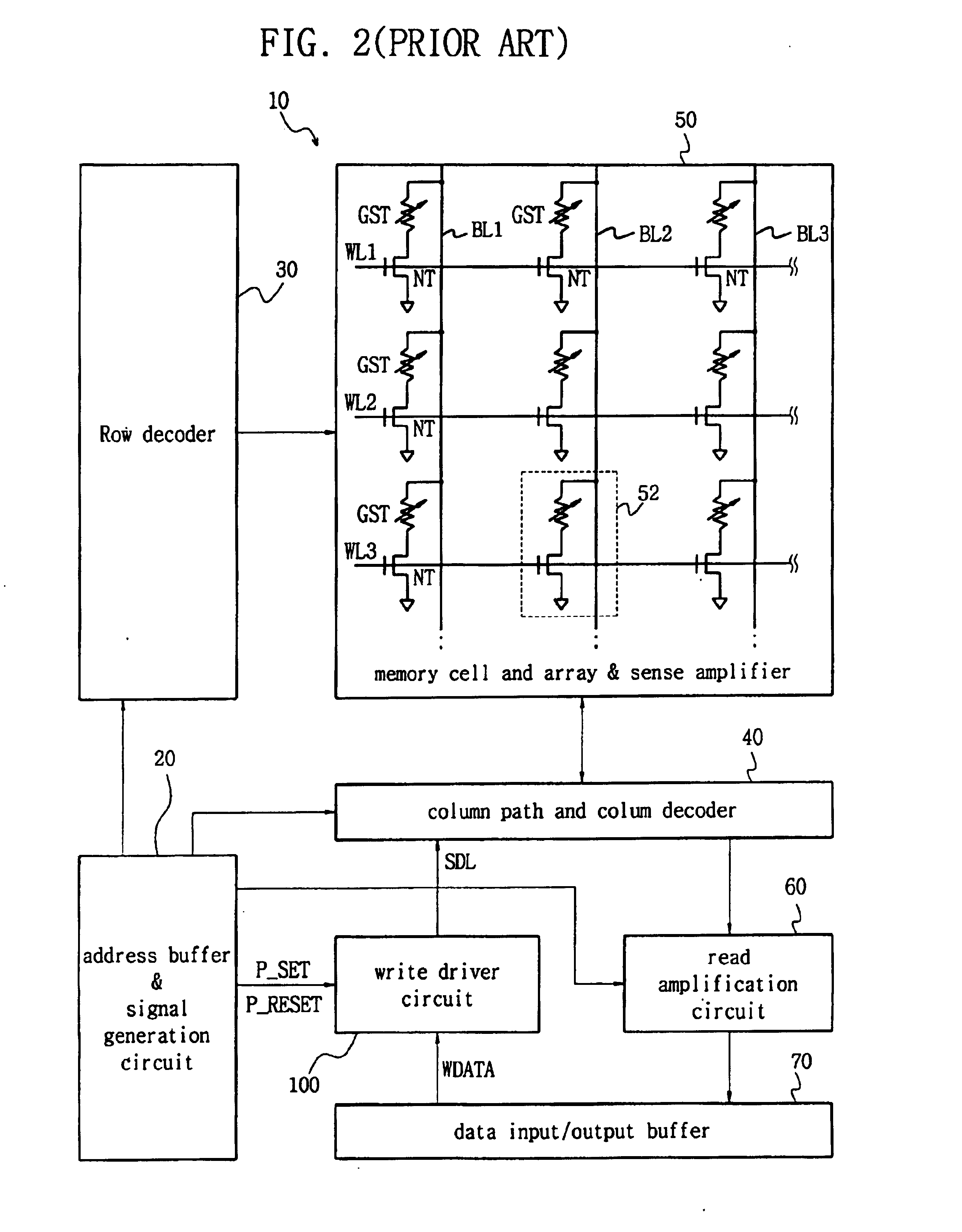Write driver circuit in phase change memory device and method for applying write current
a write driver and memory device technology, applied in semiconductor devices, digital storage, instruments, etc., can solve the problems of degrading affecting the reliability of the write operation, so as to achieve the effect of convenient write operation
- Summary
- Abstract
- Description
- Claims
- Application Information
AI Technical Summary
Benefits of technology
Problems solved by technology
Method used
Image
Examples
first embodiment
[0057]FIG. 8 is a circuit diagram showing circuit details of the write current control unit 150 and the current driving unit 160 of FIG. 6. The node NO1 corresponds to a current supply terminal and the node NO2 is a ground. Current will flow from current supply terminal node NO1 through a selected one of the reset current control unit 120 and the set current control unit 130, to the ground NO2.
[0058]Referring to FIG. 8, a reset current control unit 120 is composed of first to fourth N-type (e.g., NMOS) transistors 121 to 124, and first to third fuses 125 to 127. The first to fourth N-type (e.g., NMOS) transistors 121 to 124, which are serially connected (at their drain-source channels), receive the first selection pulse signal PRESET via their respective gate terminals. The first to third fuses 125 to 127 are correspondingly connected to the (drain of source) terminals of the second, third and fourth NMOS transistors. For example, when the first fuse 125 is cut (blown), a current th...
second embodiment
[0071]FIG. 10 is a circuit diagram showing the write current control unit and current driving unit 150 of FIG. 6. Referring to FIG. 10, a reset current control unit 120-1 is composed of first to fourth N-type (e.g., NMOS) transistors 121 to 124, and fifth and sixth N-type (e.g., NMOS) transistors 128 and 129. The first to fourth NMOS transistors 121 to 124, of which are serially connected to one another (drain-to-source, receive the first selection pulse signal PRESET in common at their respective gate terminals. The fifth NMOS transistor 128 is connected in parallel with the first and second NMOS transistors 121 and 122, and the sixth NMOS transistor 129 is connected in parallel with the third and fourth NMOS transistors 123 and 124. For example, if the fifth NMOS transistor 128 is turned on, the current flowing at the drain of the first NMOS transistor 121 also flows through the drain-source channel of the fifth NMOS transistor 128. Control signals A and B are applied to the gate ...
third embodiment
[0081]FIG. 12 is a circuit diagram showing the write current control unit and current driving unit 150 of FIG. 6. Referring to FIG. 12, a reset current control unit 120-2 is composed of first to fourth N-type (e.g., NMOS) transistors 121 to 124, and fifth and sixth NMOS transistors 127 and 128. The first to fourth NMOS transistors 121 to 124, are serially connected with one another (drain-to-source), between node NO1 and ground (NO2). The first to fourth NMOS transistors 121 to 124, and fifth NMOS transistor 127, receive the first selection pulse signal PRESET in common at their respective gate terminals. The source terminal of the sixth NMOS transistor 128 is connected to the ground (node NO2), and its drain terminal is connected to node NO1 through the source sate channel of the fifth NMOS transistor 127, and its gate terminal is connected to control signal DC-RESET. For example, according to a voltage level of the control signal DC-RESET applied to the gate terminal of the sixth ...
PUM
 Login to View More
Login to View More Abstract
Description
Claims
Application Information
 Login to View More
Login to View More - R&D
- Intellectual Property
- Life Sciences
- Materials
- Tech Scout
- Unparalleled Data Quality
- Higher Quality Content
- 60% Fewer Hallucinations
Browse by: Latest US Patents, China's latest patents, Technical Efficacy Thesaurus, Application Domain, Technology Topic, Popular Technical Reports.
© 2025 PatSnap. All rights reserved.Legal|Privacy policy|Modern Slavery Act Transparency Statement|Sitemap|About US| Contact US: help@patsnap.com



